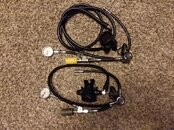Belzelbub
Contributor
That is where the redundancy argument falls apart. If AI failures were common today, we’d undoubtedly see a trend away from AI. Instead, we see the opposite. The vast majority of dive computer manufacturers offer AI.Before AI did you dive with 2 SPGs?
For the most part, diving with both AI and an SPG is familiarity/comfort/laziness. My progression was probably different than most. My first dive computer was a hosed AI console. I got used to having all the information in one place, and got to trust the tech. When that died, I went to hoseless AI, and haven’t looked back.
I’ve also worked in manufacturing for 26 years, with probably 20 or so in electronics manufacturing, and most of that in Quality. So, I trust the tech. Ironically, hardest for me is trusting the batteries. I’m not there yet, as I change the batteries in my transmitters annually, which is well before they actually need changing, but I’ve never had a battery die during a dive or trip, so I don’t see me changing that anytime soon.
I see some parallels with a concealed carry situation. The question always arose among new carriers about how a semiautomatic should be holstered. One piece of advice I got was to carry with no round in the chamber, but the trigger in the forward position. After carrying, make note of how many times the trigger was pulled in the process of holstering, etc. In my case, the answer was never, so I got more comfortable.
For those that aren’t yet trusting AI, by all means carry an SPG, but make a note of how many times you have to go your SPG. Depending on the dive computer and transmitter used, I would bet that the number is zero, or very nearly. I use a PPS transmitter and Shearwater Perdix AI. Both are known for reliability. If either had a history of communication issues, I might have a different position.





